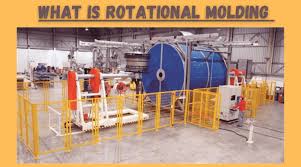
Addressing Shrinkage Issues in Rotational Molded Parts
Rotational Molding can be a well-known and price-efficient means of creating hollow, plastic-type components. It’s used in several market sectors, from auto to construction, and possesses been gaining much more attention because of its cost and overall flexibility. In this post, we’ll have a look at the basics of Rotational Molding so that you can understand how it works and why it’s learning to be a go-to manufacturing process for most companies.
What exactly is Rotational Molding?
Rotational Molding is really a manufacturing approach where molten plastic resin is poured into a heated cavity or mold that may be then slowly rotated around two axes while cooling down. This rotation uniformly distributes the plastic-type through the entire mold, producing a hollow merchandise with constant size during. The complete procedure transpires within an stove, which eliminates any additional methods required to form elements like shaping or welding.
Some great benefits of Rotational Molding
Rotational molding provides several advantages like a producing method. It’s very efficient given that all the parts are made in a stride you can find no more procedures that need to be done once the component has been established. This also causes it to be very cost effective fewer steps indicates much less work and usually lower charges per component than other creation approaches. Moreover, rotational molding produces components with consistent wall thicknesses through, which may be advantageous for several apps like floatation products or energy tanks that need strength from all of ends. Finally, simply because of its lower tooling fees and speedy setup time, rotational molding is great for tiny manufacturing runs and prototyping new items rapidly.
Summary:
Rotational molding is undoubtedly an efficient and cost-effective way to produce hollow plastic elements quickly and regularly. It’s simple to create and needs little tooling fees while delivering standard wall surface thicknesses that make it well suited for particular software for example floatation products or fuel tanks. Featuring its ever increasing popularity due to its value and flexibility, rotational molding might be the best solution for your forthcoming undertaking! With these positive aspects taken into consideration, it is easy to understand why rotational molding has become such a preferred selection across numerous sectors today!